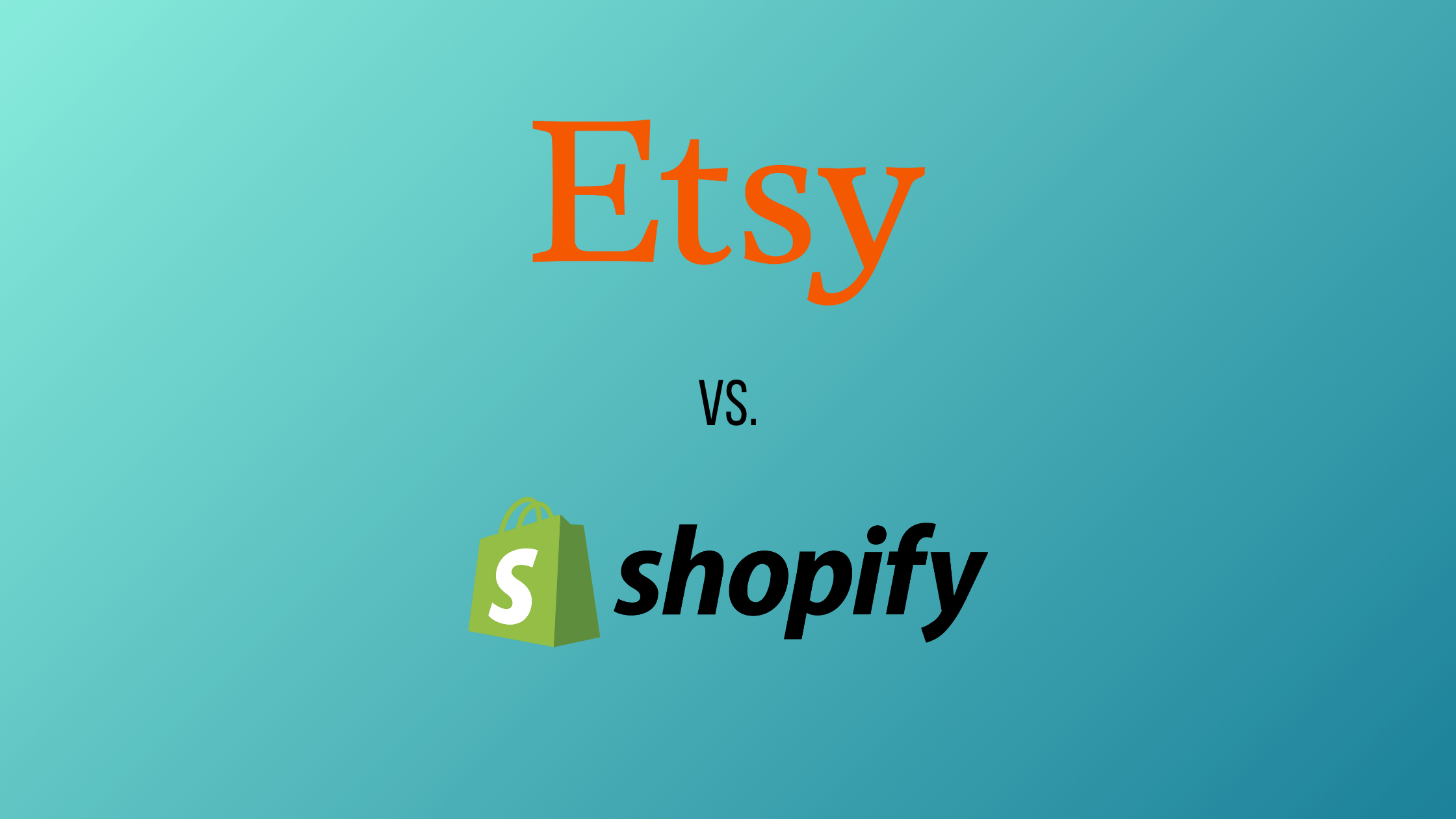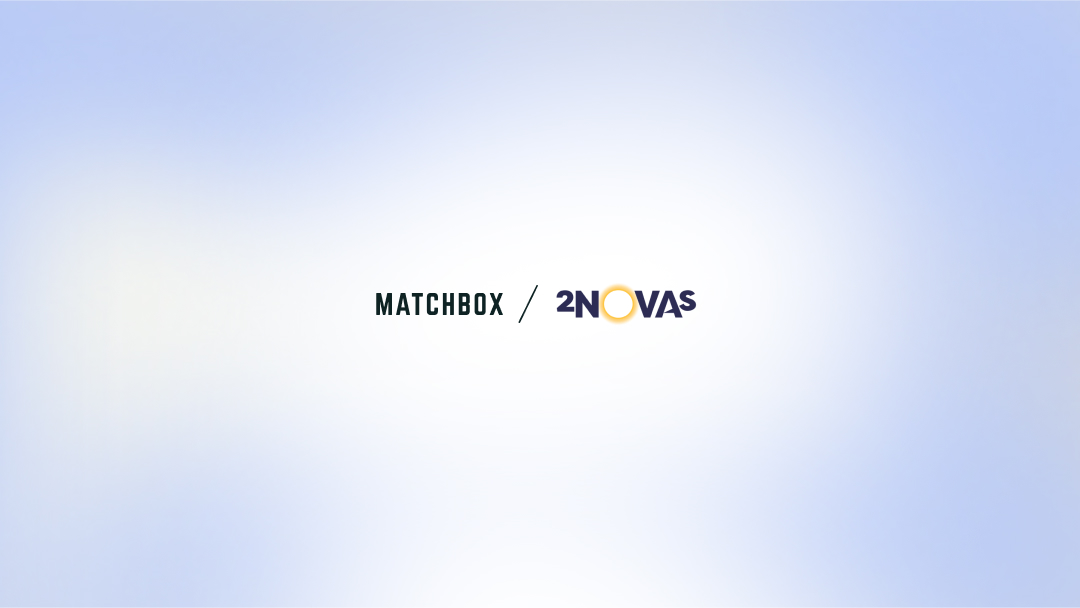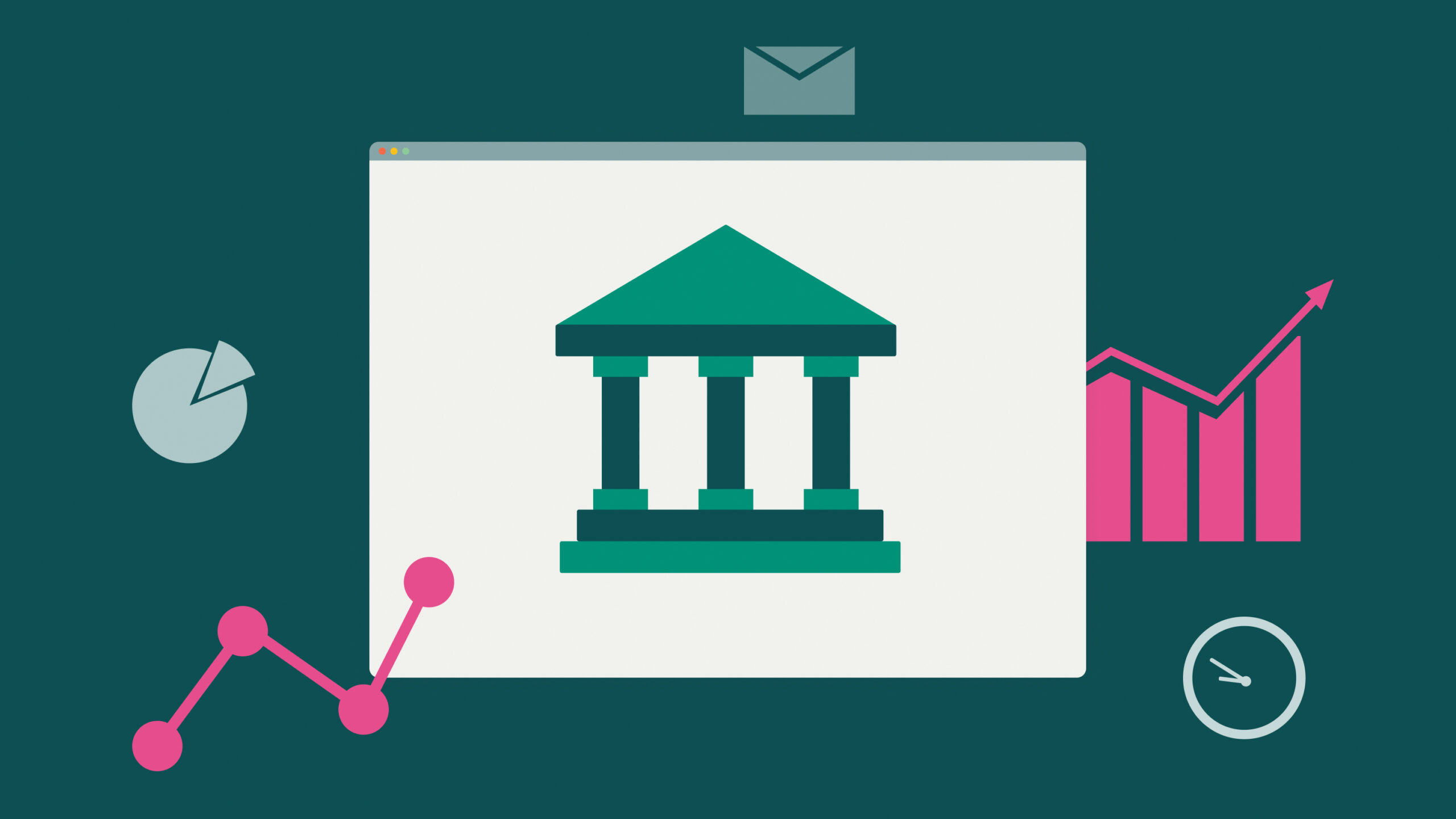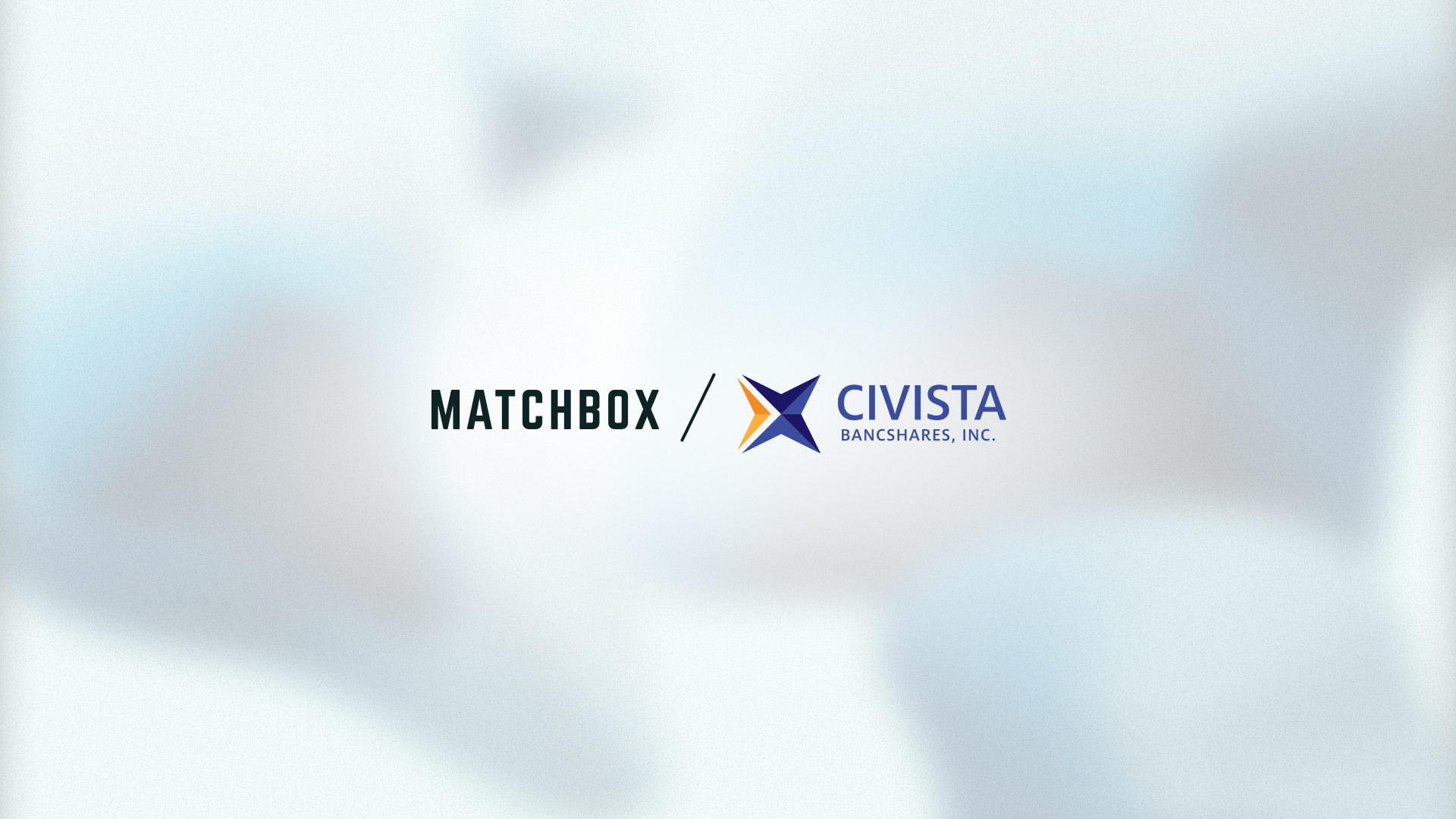Estimated reading time: 15 minutes
In the vast landscape of e-commerce, where digital marketplaces flourish, the choice of a platform can significantly impact the trajectory of your online business. The e-commerce industry has witnessed unprecedented growth, with consumers increasingly turning to online channels for their shopping needs.
With this surge in online retail, the importance of choosing the right platform cannot be overstated. It’s akin to selecting the storefront for your brick-and-mortar shop—a decision that influences not just your initial setup but your long-term success. In this comparison, we delve into the nuances of Etsy vs. Shopify, providing insights to help you navigate the dynamic world of online entrepreneurship. Understanding these platforms is a crucial step toward establishing a robust foundation for your digital business.
Related Links
What Is Etsy?
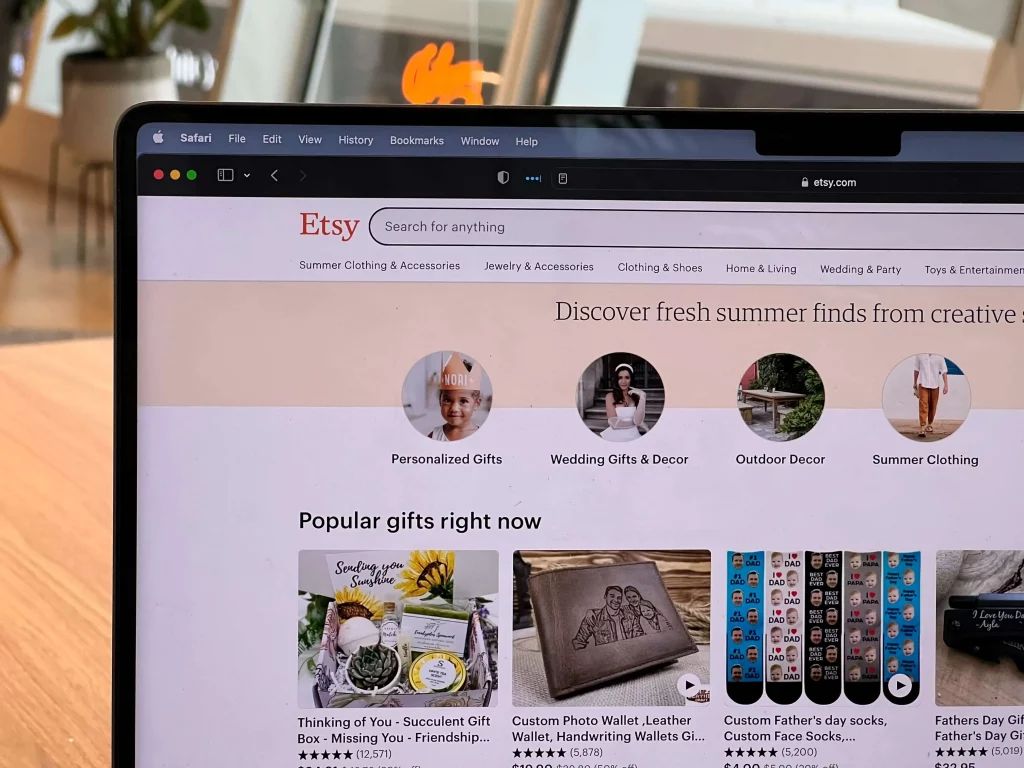
Etsy, a distinctive player in the e-commerce realm, stands out for its unique approach. Launched in 2005, Etsy carved its niche by catering to a community of artisans, crafters, and independent creators. Unlike mainstream platforms, Etsy fosters a marketplace with a personal touch, emphasizing handmade, vintage, and unique products.
Target Audience And Niche Focus
Etsy’s charm lies in its appeal to a specific demographic. It attracts individuals seeking one-of-a-kind, artisanal products, and those who appreciate the value of craftsmanship. The platform has cultivated a community of buyers who actively support independent sellers, contributing to a distinct marketplace culture.
Pros Of Selling On Etsy
Established Marketplace With A Large Customer Base
One of Etsy’s undeniable strengths is its status as a seasoned marketplace. Having been a prominent player in the e-commerce scene since 2005, Etsy boasts a vast and diverse customer base. For sellers, this translates into immediate access to a substantial audience actively seeking unique, handmade, or vintage products.
Easy Setup And User-Friendly Interface
Etsy is designed with simplicity in mind. Sellers, regardless of technical expertise, can easily set up their storefronts on the platform. The user-friendly interface streamlines the onboarding process, allowing entrepreneurs to focus on their products rather than grappling with complex setup procedures.
Built-in Community And Social Aspect
Beyond transactions, Etsy fosters a sense of community among its users. Sellers and buyers alike engage in a unique social aspect, creating connections that extend beyond mere transactions. This built-in community contributes to a supportive ecosystem where like-minded individuals share insights, feedback, and mutual appreciation for craftsmanship.
Cons Of Selling On Etsy
Limited Branding And Customization Options
Etsy’s aesthetic consistency comes at a cost for sellers looking to establish a distinct brand identity. The platform imposes limitations on branding and customization, constraining sellers who wish to create a unique and memorable online presence.
Transaction Fees And Listing Fees
While Etsy provides a platform for sellers, it does so with financial implications. Transaction fees on completed sales and listing fees for product placements affect the overall profitability of sellers. For those on a tight budget, these fees can impact the bottom line.
Competition Within The Platform
The popularity of Etsy inevitably leads to a competitive environment. With numerous sellers vying for attention within the platform, standing out requires strategic planning and a unique value proposition. Sellers must navigate this internal competition to ensure their products capture the attention of the discerning Etsy audience.
Introduction To Shopify

Shopify, a leading e-commerce platform, provides a comprehensive solution for businesses seeking a customizable and scalable online presence. Established in 2006, Shopify has evolved into a powerhouse, offering a range of tools and features designed to empower entrepreneurs, from startups to established enterprises.
Known for its user-friendly interface and versatility, Shopify enables businesses to create, manage, and grow their online stores with ease. Unlike marketplaces like Etsy, Shopify allows sellers to build their standalone e-commerce websites, offering greater control over branding and customer experience.
Target Audience And Flexibility
Target Audience
Shopify caters to a broad spectrum of entrepreneurs, making it suitable for businesses of various sizes and industries. From small-scale startups to well-established brands, Shopify accommodates a diverse array of sellers. This inclusivity allows businesses to start small and seamlessly scale their operations as they grow.
Flexibility
Flexibility is a cornerstone of Shopify’s appeal. The platform is renowned for its adaptability to different business models and industries. Whether you’re selling physical products, digital goods, or services, Shopify provides the tools and features to create a tailored online storefront.
- Physical Products: Shopify offers robust features for businesses selling tangible products, including inventory management, shipping solutions, and customizable product pages.
- Digital Products: For those in the digital space, Shopify facilitates the sale of digital goods with secure delivery options and downloadable content.
- Services: Service-oriented businesses can leverage Shopify for appointment scheduling, membership sites, and other features tailored to their unique needs.
Shopify’s flexibility extends beyond the type of products or services offered. It accommodates a variety of business models, allowing entrepreneurs to explore and implement strategies that align with their vision and goals. This adaptability positions Shopify as a versatile and scalable solution for a diverse range of online businesses.
Pros And Cons Of Selling On Shopify
| Pros Of Selling On Shopify |
|---|
| a. Full Control Over Branding And Customization |
| b. Wide Range Of Features And Apps |
| c. Scalability For Growing Businesses |
| Cons Of Selling On Shopify |
| a. Monthly Subscription Fees |
| b. Learning Curve For Beginners |
| c. Building And Driving Traffic To Your Own Site |
Pros Of Selling On Shopify
Full Control Over Branding And Customization
One of the standout advantages of Shopify is the unparalleled control it offers sellers over their brand and storefront. Unlike platforms with rigid templates, Shopify empowers businesses to fully customize their online presence. From the homepage to checkout, sellers can tailor the aesthetics to align seamlessly with their brand identity.
Wide Range Of Features And Apps
Shopify boasts an extensive ecosystem of features and apps, providing sellers with a toolkit to enhance their online stores. Whether it’s advanced analytics, marketing tools, or inventory management, Shopify’s App Store offers a diverse array of solutions. This flexibility allows businesses to adapt and optimize their operations based on evolving needs.
c. Scalability For Growing Businesses
Designed with scalability in mind, Shopify accommodates businesses at every stage of their growth journey. From small startups to established enterprises, the platform seamlessly scales to meet increased demands. As sales volume and product offerings expand, Shopify provides the infrastructure to support and facilitate this growth.
Shopify’s scalability seamlessly integrates headless functionality, empowering businesses to decouple systems and optimize growth with a responsive, agile headless Shopify approach.
Cons Of Selling On Shopify
Monthly Subscription Fees
One of the notable considerations for sellers on Shopify is the presence of monthly subscription fees. While the platform offers various pricing plans to cater to different needs, the necessity of a subscription can be a financial burden for businesses, particularly those in their initial stages.
Learning Curve For Beginners
For individuals new to e-commerce or online store management, Shopify’s robust feature set can pose a learning curve. While the platform is designed to be user-friendly, beginners may need time to familiarize themselves with the interface, settings, and customization options. However, Shopify does provide extensive resources, tutorials, and a supportive community to assist users in overcoming this initial hurdle.
Building And Driving Traffic To Your Site
Unlike marketplaces such as Etsy where a built-in customer base exists, Shopify sellers need to actively drive traffic to their standalone websites. Building brand visibility and attracting a steady flow of visitors require strategic marketing efforts, which may be more demanding compared to leveraging an existing marketplace’s customer base.
Understanding these pros and cons is crucial for sellers evaluating Shopify as their chosen e-commerce platform, helping them make informed decisions aligned with their business goals.
Shopify Vs. Etsy: Comparing Features
Product Listing And Customization
Etsy’s Product Listing Capabilities
Etsy offers a straightforward product listing process, allowing sellers to showcase their items with images, descriptions, and pricing. However, customization options are somewhat limited. Sellers can personalize product titles, descriptions, and attributes, but the overall look and feel of the product page adhere to Etsy’s standardized layout. This uniformity is in line with Etsy’s commitment to a cohesive marketplace aesthetic.
Shopify’s Product Listing Capabilities
Shopify provides sellers with robust product listing capabilities and extensive customization options. Sellers can create visually engaging product pages with customizable layouts, images, and detailed descriptions. This flexibility extends to product variants, enabling sellers to efficiently manage different versions of the same product. The comprehensive product management system on Shopify empowers sellers to curate a unique and branded shopping experience for their customers.
Branding And Customization
Etsy’s Branding Options
Etsy, as a marketplace, prioritizes a unified and recognizable brand identity across the platform. While sellers can add shop policies, a shop banner, and an ‘About’ section to infuse some personality, extensive branding options are limited. The emphasis is on maintaining a cohesive Etsy shopping experience, ensuring that individual shops contribute to the overall marketplace aesthetic.
Shopify’s Branding And Customization Options
Shopify excels in offering sellers complete control over their brand identity. Sellers can customize their storefronts extensively, from the logo and color scheme to the layout and typography. With a variety of themes and templates available, sellers can create a unique online presence that aligns precisely with their brand image. This level of customization fosters brand recognition and helps businesses stand out in a competitive online landscape.
Transaction Fees And Pricing
Etsy’s Fee Structure
Etsy operates on a transaction fee model, charging sellers a percentage of each sale, including shipping costs. Additionally, there are listing fees for each product added to the platform. While this structure provides access to Etsy’s established customer base, sellers need to factor these fees into their pricing strategies to maintain profitability.
Shopify’s Pricing Plans
Shopify offers a subscription-based pricing model, with plans catering to various business sizes. The plans include features such as unlimited product listings, secure checkout, and 24/7 customer support. While subscription fees are a consideration, Shopify does not charge transaction fees for using external payment gateways. This fee structure allows businesses to forecast their expenses more predictably and potentially save on transaction costs as their sales volume increases.
By comparing these features, sellers can discern which platform aligns more closely with their business needs and preferences. Each platform’s strengths and limitations contribute to the overall decision-making process when choosing between Etsy vs Shopify.
User Experience

Ease of Setup And User Interface
Etsy’s Setup Process
Etsy’s setup process is designed to be user-friendly, catering to individuals with varying levels of technical expertise. Sellers can quickly create an account, set up their shop, and start listing products. The platform guides users through essential steps, such as adding product details, setting prices, and configuring shipping options. While customization options are somewhat limited compared to Shopify, Etsy’s streamlined setup process ensures that even beginners can establish an online presence without significant hurdles.
Shopify’s Setup Process
Shopify’s setup process is equally intuitive, offering a comprehensive onboarding experience. Upon signing up, users are guided through the steps of creating their online store. The platform provides a range of customizable templates, allowing sellers to choose a design that suits their brand. Additionally, Shopify offers a ‘drag-and-drop’ editor for further customization. While the level of customization may require a bit more familiarity, the process is well-documented with tutorials and prompts, ensuring that even beginners can navigate the setup process successfully.
Customer Support And Community
Etsy’s Support and Community
Etsy provides support through a robust Help Center, offering guides, tutorials, and FAQs to address common queries. The platform also offers email support for specific issues. The community aspect on Etsy is notable, with forums and seller communities where users can seek advice, share experiences, and connect with fellow entrepreneurs. This communal support can be valuable for sellers navigating the nuances of Etsy’s marketplace.
Shopify’s Support and Community
Shopify prioritizes customer support through various channels, including live chat, email, and phone support, available 24/7. The platform’s extensive Help Center and documentation serve as valuable resources for problem-solving and learning. Additionally, Shopify boasts a large and active community. Sellers can participate in forums, discussions, and community events to exchange insights and receive guidance. The combination of professional support and a thriving community enhances the overall user experience for Shopify users.
Understanding the user experience nuances of Etsy and Shopify, from the setup process to ongoing support, contributes to a well-informed decision-making process for prospective online sellers. Both platforms strive to make their interfaces accessible, but the differences in customization and support options may influence the platform that aligns best with individual preferences and requirements.
Making The Decision
Assessing Your Business Needs And Goals
Before deciding between Etsy vs Shopify, it’s crucial to conduct a thorough assessment of your business needs and goals. Consider the nature of your products, your target audience, and your long-term aspirations. If you’re a crafter or artisan seeking a platform with a built-in community and a focus on handmade or vintage items, Etsy might be the ideal choice. Conversely, if you prioritize full control over branding and customization and envision a standalone e-commerce website, Shopify could better align with your goals. By aligning your platform choice with your business’s unique requirements, you set the foundation for sustainable growth.
Budget Considerations
Budget considerations play a pivotal role in the decision-making process. Etsy, with its transaction and listing fees, may be a more feasible option for businesses with limited initial capital. However, if you value the extensive customization options and scalability offered by Shopify, it’s essential to factor in the monthly subscription fees. Analyze your budget constraints and assess how each platform’s pricing model aligns with your financial capacity. Keep in mind that the initial investment may vary, but the long-term costs can significantly impact your bottom line.
Long-Term Scalability And Growth
Contemplating the long-term scalability and growth potential of your business is integral to the decision-making process. Shopify’s scalability is a notable feature, offering businesses the ability to grow seamlessly. As your product range expands and sales increase, Shopify can accommodate these changes without requiring a platform switch. On the other hand, if you’re comfortable operating within the niche focus of Etsy and value the platform’s established customer base, it may be a suitable choice for sustained growth within that specific ecosystem. Consider the trajectory you envision for your business and choose a platform that aligns with your scalability goals.
Key Takeaways
- Platform Alignment with Business Needs: Assess your business needs, target audience, and product offerings. Choose a platform that aligns with your goals, whether it be the artisan-focused community of Etsy or the customizable, standalone storefront approach of Shopify.
- Budget Consciousness: Consider your budget constraints when making the decision. Etsy’s transaction and listing fees may be suitable for businesses with limited initial capital, while Shopify’s subscription fees provide more extensive customization options but require a monthly financial commitment.
- Scalability and Long-Term Vision: Evaluate the long-term scalability and growth potential of your business. Shopify’s scalability allows for seamless expansion, making it a robust choice for businesses with aspirations of sustained growth. However, if your vision aligns with Etsy’s specific niche and community, it might be the right platform for your long-term goals.
- User Experience and Support: Factor in the user experience and support provided by each platform. Etsy offers a streamlined setup and a built-in community, while Shopify provides extensive customization options and 24/7 customer support. Consider which platform’s user interface and support structure best align with your comfort level and needs.
- Branding and Customization: Delve into the branding and customization options offered by each platform. Etsy maintains a cohesive aesthetic across the marketplace, while Shopify provides unparalleled control over your brand’s identity. Choose based on the level of customization that suits your brand image and marketing strategy.
In the end, the decision between Etsy vs Shopify is not one-size-fits-all. It requires a thoughtful consideration of your unique business context, financial capacity, growth aspirations, and desired user experience. By prioritizing these key factors, you can make a well-informed decision that propels your online business towards success.
Contact Matchbox Design Group Today!
If your website could use a refresh, if you’re looking to drive more traffic to your site, or you would like to submit a guest post, fill out the form below and we’ll contact you to learn more about your digital needs.
Shopify Vs. Etsy FAQ
Q: Why switch from Etsy to Shopify?
A: Switching from Etsy to Shopify offers several advantages. While Etsy is known for its artisan community, Shopify provides greater control over branding, customization, and scalability. Shopify allows you to create your standalone online store, offering a more professional and customizable space for your business. Additionally, you have the flexibility to expand beyond Etsy’s niche market and tap into a broader audience.
Q: Do you need a business license to sell on Etsy or Shopify?
A: The requirements for a business license vary depending on your location and the nature of your business. Etsy generally doesn’t require a business license to start selling, but it’s essential to check local regulations. Shopify also doesn’t mandate a license to set up a store, but compliance with local laws is crucial. Always research and ensure you adhere to the licensing requirements in your jurisdiction.
Q: Is Shopify hard to sell on?
A: Shopify is designed to be user-friendly, but like any platform, there is a learning curve. The intuitive interface and extensive documentation make the setup process accessible, even for beginners. Shopify provides numerous resources, tutorials, and a supportive community to help sellers navigate the platform effectively, ensuring a smooth and efficient selling experience.
Q: Do I need a tax ID for Shopify?
A: Yes, you typically need a tax identification number (TIN) or employer identification number (EIN) for tax purposes when selling on Shopify. This unique identifier helps in reporting your business income to tax authorities. It’s advisable to consult with a tax professional to ensure compliance with specific tax regulations in your jurisdiction.
Q: Do I need an LLC to sell on Shopify?
A: No, you don’t need an LLC (Limited Liability Company) to sell on Shopify. Many Shopify sellers operate as sole proprietors, especially when starting. However, forming an LLC can provide personal liability protection and other benefits. The decision depends on your business goals, preferences, and legal considerations. Consulting with a business advisor or legal professional is recommended.
Q: Do I need an EIN to sell on Etsy?
A: While an EIN (Employer Identification Number) is not mandatory for most Etsy sellers, it can be beneficial. It’s used for tax reporting and can help separate your business and personal finances. Check with your local tax authorities to understand if an EIN is required for your specific situation.
Q: Should I do both Etsy and Shopify?
A: Selling on both Etsy and Shopify, known as a multi-channel approach, can be advantageous. It allows you to reach different audiences and diversify your sales channels. However, managing both platforms requires careful inventory and order management. Evaluate the time and resources you can dedicate to each platform and consider your business goals before deciding on a multi-channel strategy.
